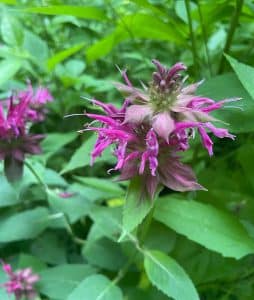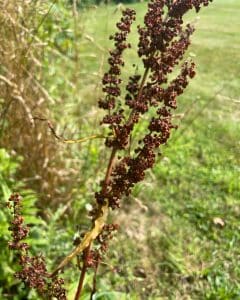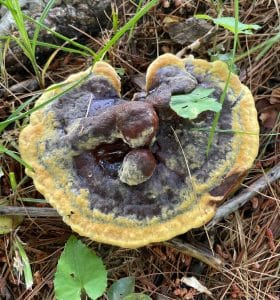Chufa (Cyperus esculentus), is an annual sedge found throughout most of the world. Originally thought to be native to Africa, southern Europe and western Asia, it has now spread quite prolifically throughout the other continents. It is known by a number of other commonly used names such as nut grass, yellow nutsedge and water grass, to name but a few.
You’ll find it growing in very moist conditions; Within Asia it is a common unwanted visitor to rice paddies. It is frequently considered a weed and can often appear on well watered public lawns and golf courses.
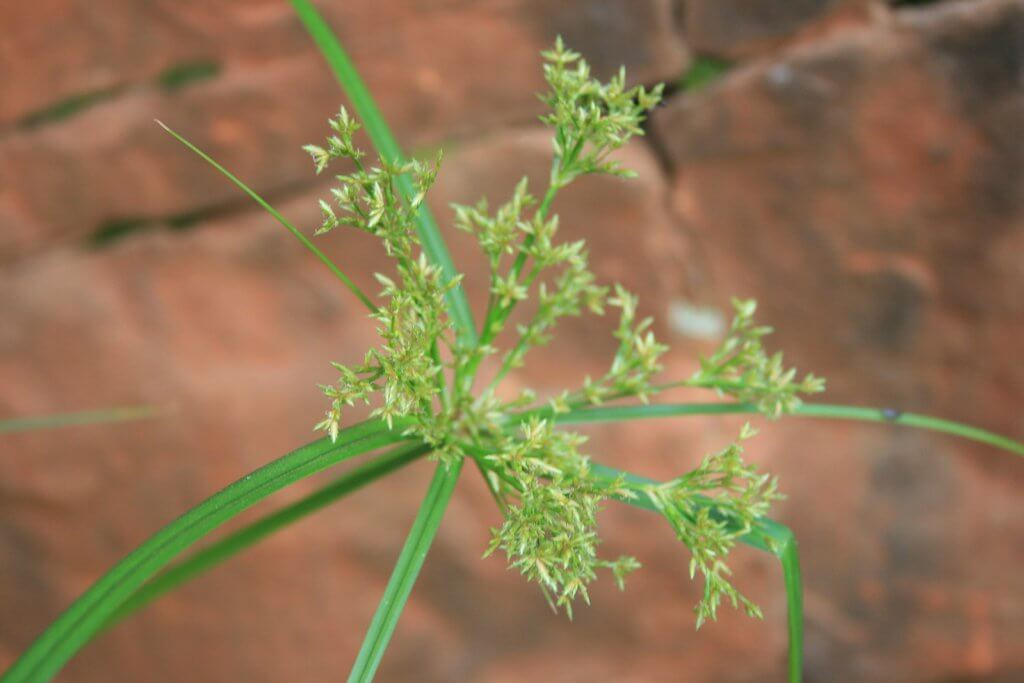
It usually reaches about 80cm in height, with a single triangular stem growing from the tuber. Clusters of smaller tubers or ‘nutlets’ form along the shallow roots, much like the peanut or groundnut. Long slender leaves, a inch or two wide, reach upwards from the central stem. When flowering, small bracts positioned at a right angle, bear tiny clusters of subtle green/yellow flowers. Thousands of seeds are formed by an individual plant within just one year, hence its ability to spread quickly and be classified as a weed.
Edible parts and other uses
The small nutlets of chufa grass are a tasty and nutritious wild edible. A single plant can produce over a hundred of these underground treats throughout June to October. Many people claim that some varieties have a taste similar to a hazelnut. The tubers can commonly be referred to by earth almonds or tiger nuts in recipes, and can even be purchased in some specialty food stores.
Within Spain, chufa tubers are used to flavor a popular, sweet and milky drink called Horchata. Their sweet and nutty flavoring can add an earthy depth to a recipe. From sweet treats like breads and smoothies, to using them in savoury dishes like soups and stews.
After thorough washing you can even eat them raw. Gently rub the outer skins from them and then enjoy their sweet, nutty taste.
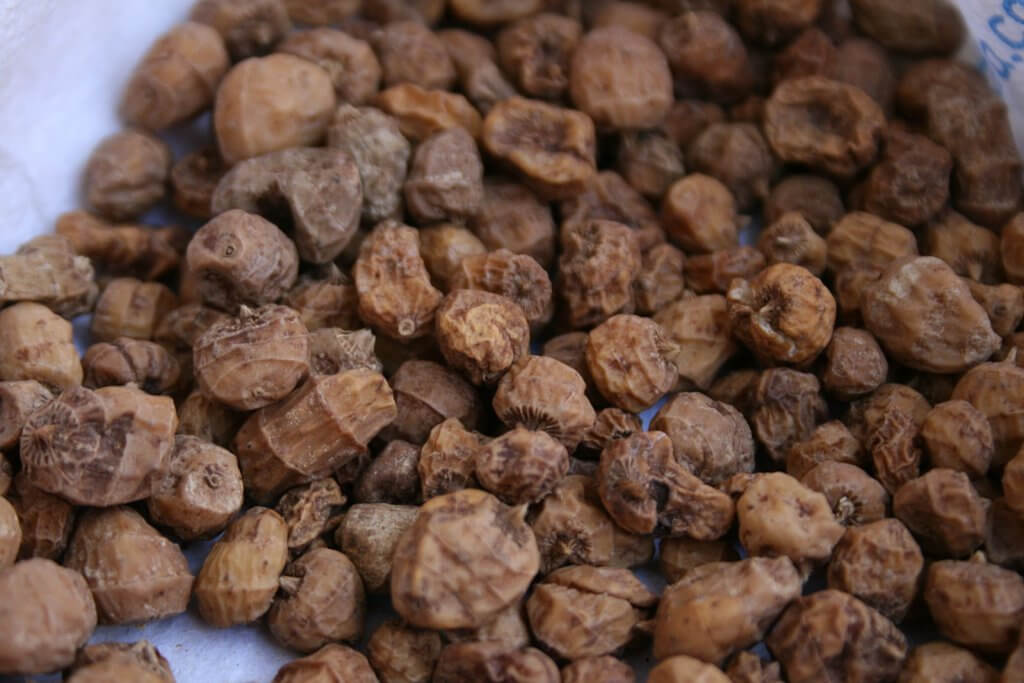
Cautions
Due to its weed status, chufa may have been treated with a herbicide in urban areas, so make sure you forage in wild areas only.
Purple nut sedge (Cyperus rotundus) is a very similar species that also has edible tubers, however this tends to grow in areas of drier ground. The tubers are edible, but generally have a less palatable taste.
Chufa is usually easy to identify, however careful identification should be carried out before eating any wild edible.
Foraging
Look for chufa in old fields, or damp areas of ground that have been recently disturbed. Riverbanks, marshes and the edges of creeks and streams are also a great place to forage. They do not grow in salty soil, so you are not likely to find them near the coast.
The best time to unearth the tubers is between early summer and fall, when the plant is seeding. Bigger tubers will appear if the soil is looser, so look for areas of soil that are not too dry, compact or made up of mostly clay.
You will not have to dig deep to find these tasty tubers. Gently pry up the roots and soil around the base of a stem and the root system should be easily unearthed.
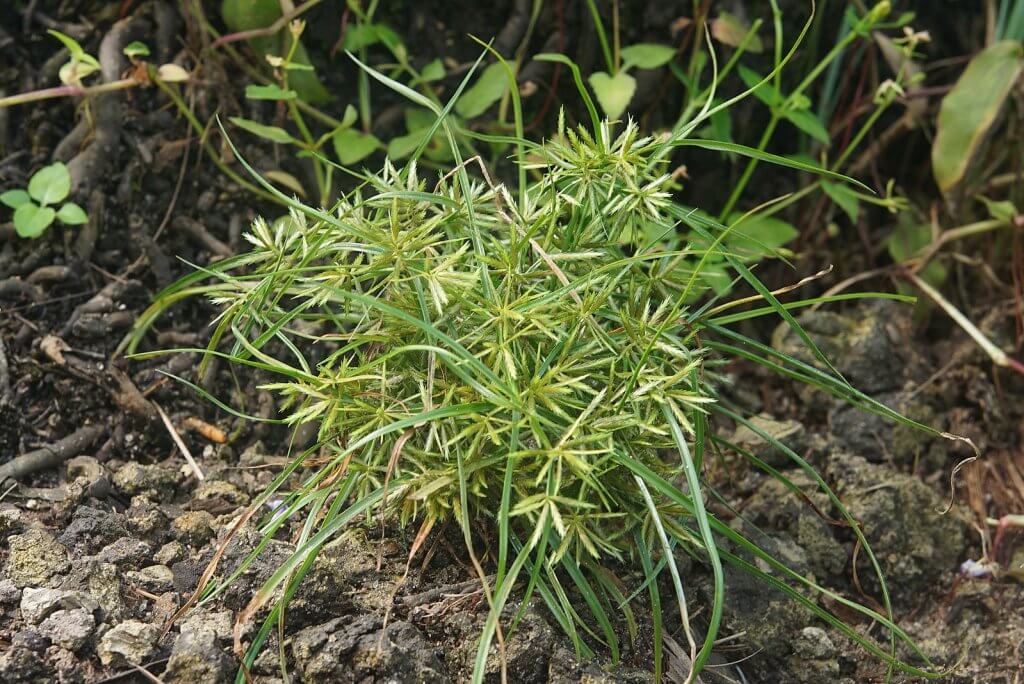
Did you know…
Excavations and archaeology have revealed that ancient cultures across the world harvested and even cultivated chufa grass. Native Americans harvested and cooked with chufa grass up to 9000 years ago, and studies have also shown that ancient Egyptians used the tubers too.
Conclusion
With the abundant amount of tubers chufa can provide, these would make a great plant to have on hand in a wild edible garden. They are nutritious and extremely flavorful as well as rewarding to forage. Due to their weed classification, you can harvest as much chufa as needed, making sure to leave a small portion for other foragers and to maintain the local population.
—————Written by Hannah Sweet
Hannah is a freelance writer and graphic designer from the UK. With a penchant for travelling, photography and all things botanical, she enjoys writing about a wealth of topics and issues, from conservation and slow living, to design and travel. Learn more about her writing and design services at www.sweetmeanders.co
Many of our readers find that subscribing to Eat The Planet is the best way to make sure they don't miss any of our valuable information about wild edibles.
See our privacy policy for more information about ads on this site

